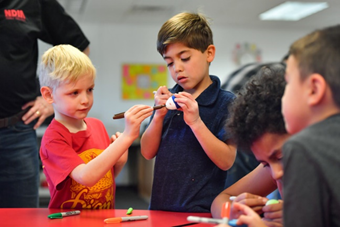16.8: Conclusion
School-age children experience learning in a wide range of settings. Family, school and the community (including school-age care settings) provide diverse opportunities for children to explore relationships and ideas, and build competence and skills. The diversity in family and community life means that school-age children experience belonging, being and becoming in many different ways. They bring their diverse experiences, perspectives, expectations, knowledge and skills to their learning.
Children’s learning is dynamic, complex, and holistic. Physical, social, emotional, personal, spiritual, creative, cognitive, and linguistic aspects of learning are all intricately interwoven and interrelated.
Play is a context for learning that:
- allows for the expression of personality and uniqueness
- enhances dispositions such as curiosity and creativity
- enables children to make connections between prior experiences and new learning assists
- children to develop relationships and concepts
- stimulates a sense of well-being.
Children actively construct their own understandings and contribute to others’ learning. They recognize their agency, capacity to initiate and lead learning, and their rights to participate in decisions that affect them, including their learning.

Recreational experiences constructed by children and supported by informed educators promote children’s dynamic, complex and holistic learning. Children’s happiness, optimism and sense of fun are dispositions that are significant to their emotional well-being and resilience. In school-age care settings, children’s sense of responsibility for their learning is co-determined and skills and attitudes towards life-long learning are consolidated. Children actively involved in community building develop common interests and learn about citizenship.
Viewing children as active participants and decision-makers opens up possibilities for educators to move beyond preconceived expectations about what children can do and learn. This requires educators to respect and work with children’s unique qualities, abilities and interests. When children are given choices and control, they experience connections between actions and consequences.
Educators’ practices and the relationships they form with children and families have a significant effect on children’s sense of identity and well-being which impacts on children’s involvement and success in learning. Children thrive when families, educators and the wider community (especially schools) work together in partnership to support children’s well-being and learning.[1]
- My Time, Our Place - Framework for School Age Care in Australia by the Department of Education and Training is licensed under CC BY 4.0; ↵

